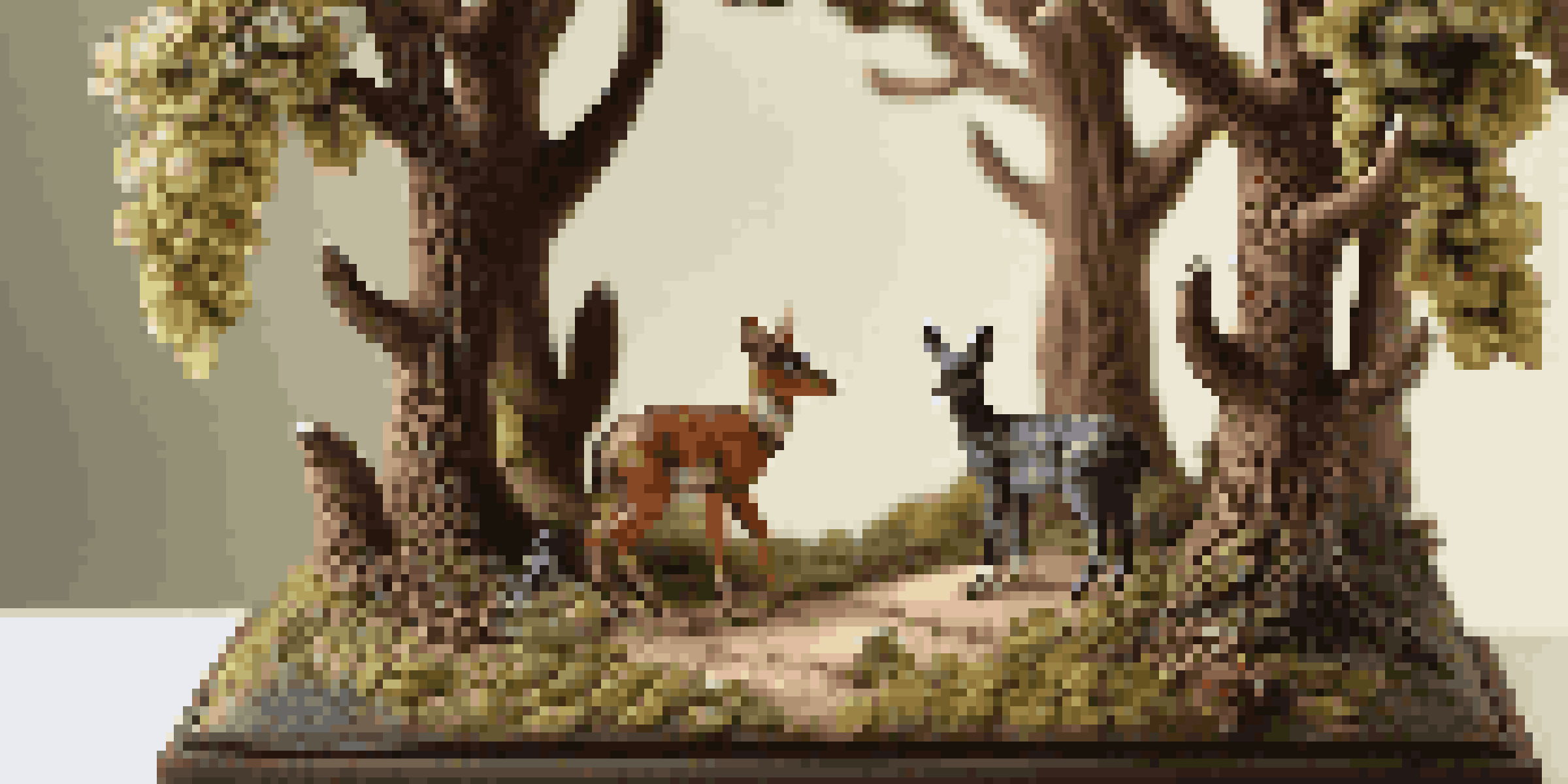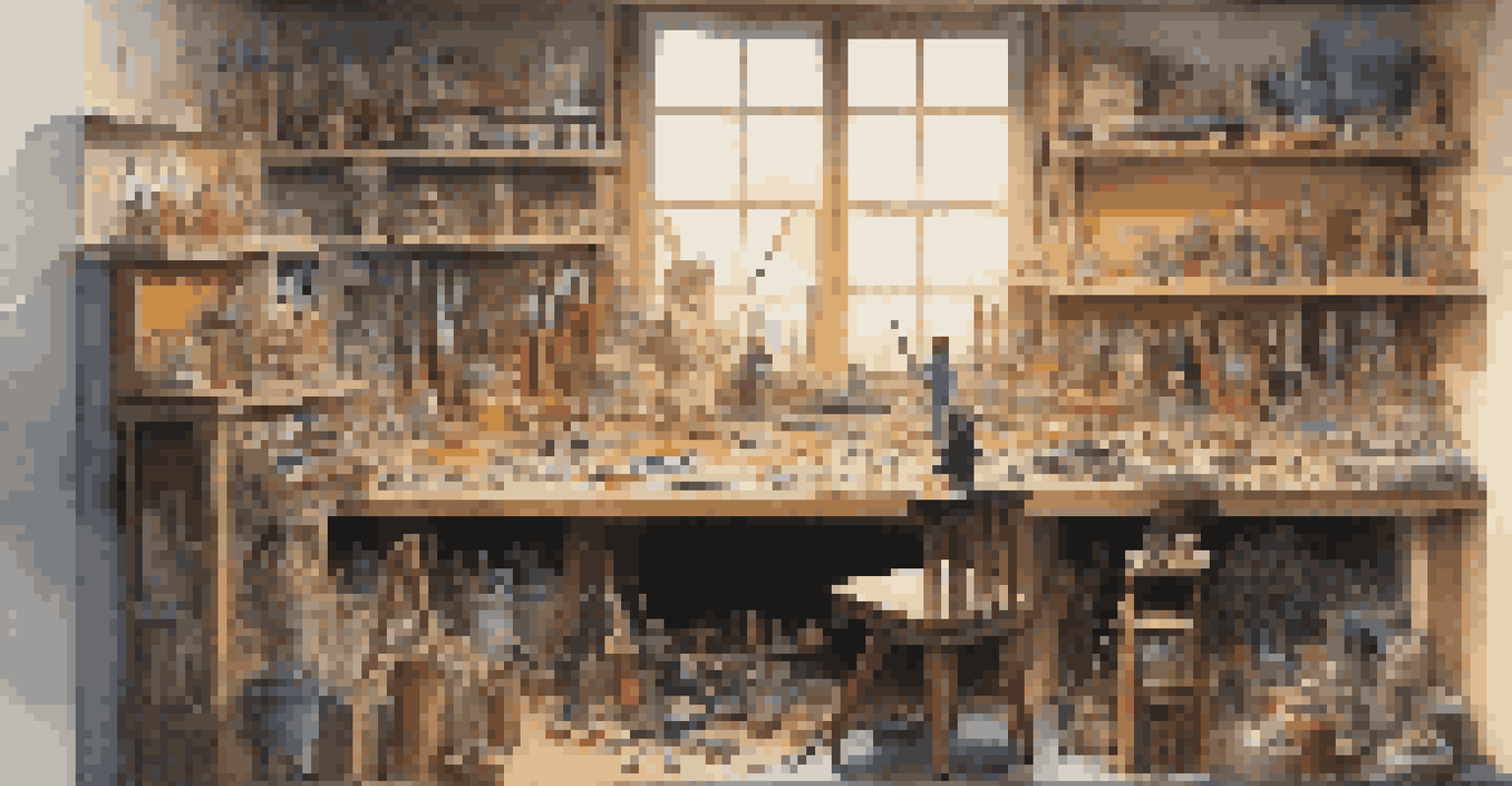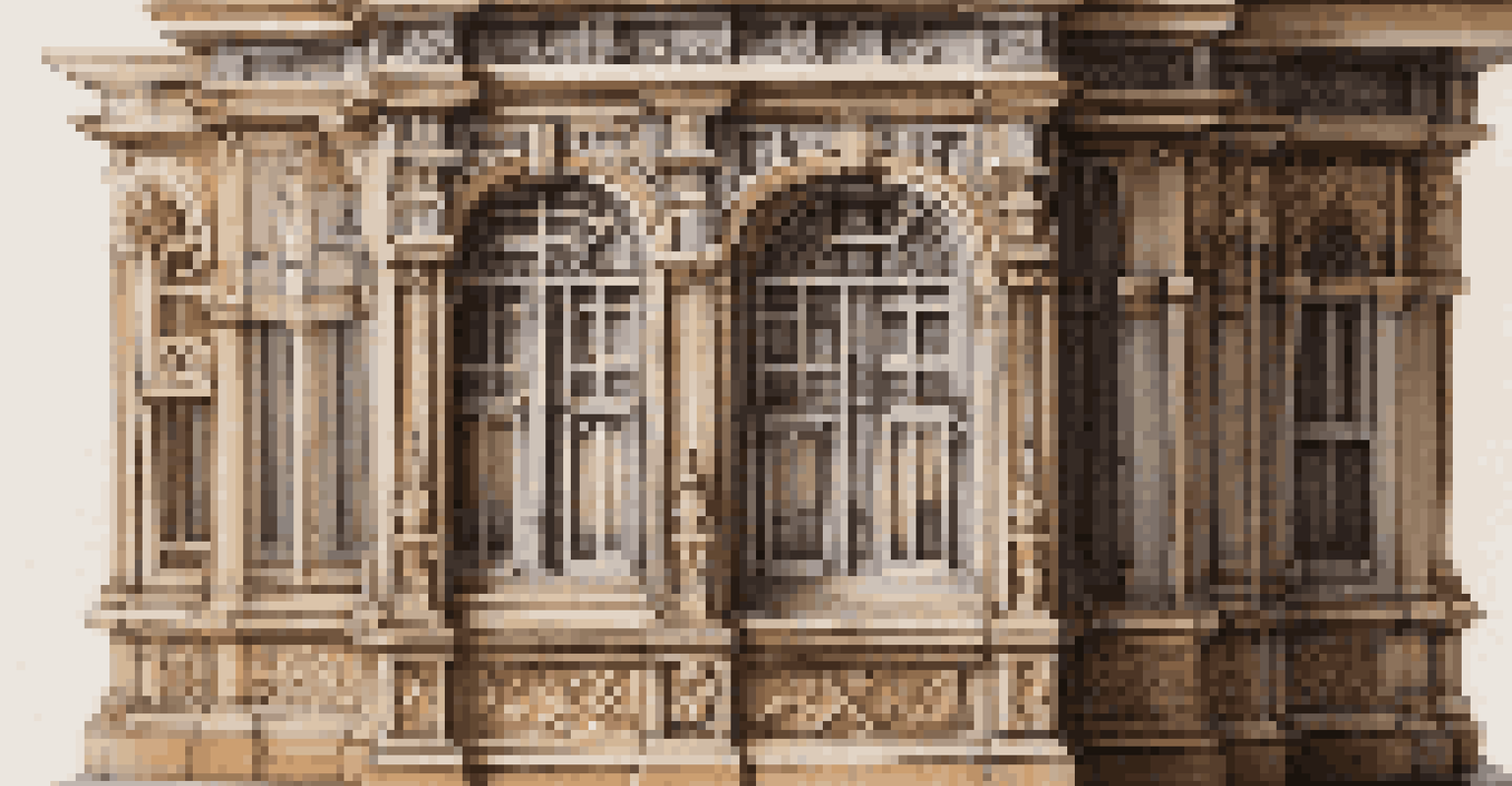The Art of Miniature Sculpture: Techniques and Challenges

Understanding Miniature Sculpture: A Brief Overview
Miniature sculpture is a captivating art form that focuses on creating small-scale, detailed representations of subjects. From tiny figurines to intricate architectural models, this art form allows artists to showcase their skills in precision and creativity. Unlike larger sculptures, miniature works often require a different approach due to their size and detail, making them unique in the art world.
Art is not what you see, but what you make others see.
The history of miniature sculpture dates back centuries, with origins found in various cultures around the globe. These small masterpieces can serve as decorative pieces, collectibles, or even functional art in some cases. As we explore this art form, it's important to appreciate the craftsmanship that goes into each tiny creation.
Today, miniature sculpture has evolved with new techniques and materials, attracting both seasoned artists and newcomers alike. The accessibility of this art form has allowed for a resurgence in popularity, with workshops and online tutorials making it easier for enthusiasts to get started.
Essential Tools for Miniature Sculptors
Creating miniature sculptures requires specific tools that cater to the precision and detail needed for such small works. Essential tools include fine-tipped sculpting knives, various size brushes, and a range of modeling materials like polymer clay or resin. Each tool plays a crucial role in shaping, detailing, and finishing the sculpture.

For instance, a fine-tipped knife can help carve intricate designs, while different brush sizes allow for delicate painting and finishing touches. Additionally, sculptors often use magnifying glasses to better see the details they’re working on, ensuring accuracy in their creations. Having the right tools can make a world of difference in the quality of the finished piece.
Miniature Sculpture's Rich History
Miniature sculpture is an ancient art form with roots in various cultures, showcasing intricate craftsmanship and diverse uses.
Furthermore, investing in high-quality tools can save time and frustration, enabling artists to focus on their creativity rather than struggling with inadequate equipment. As with any craft, the right tools can elevate the artistry and enhance the overall experience.
Popular Techniques in Miniature Sculpture
Miniature sculptors employ various techniques to bring their visions to life, with each technique offering unique possibilities. One popular method is additive sculpting, where material is added layer by layer to create the desired form. This technique allows for intricate detailing and the creation of complex shapes that are characteristic of miniature works.
The details are not the details. They make the design.
Another technique is subtractive sculpting, where artists carve away material from a solid block to reveal the sculpture. This method requires a keen eye for proportions and depth, as mistakes can be difficult to rectify in such small scales. Many sculptors often combine both techniques, depending on the desired outcome and the materials used.
Moreover, the choice of medium can influence the techniques used. For example, polymer clay might lend itself to more detailed work, while wood might require different approaches. Understanding these techniques helps artists choose the best path for their creative projects.
Common Challenges in Miniature Sculpture
Despite its allure, miniature sculpture comes with its own set of challenges that artists must navigate. One of the primary difficulties is achieving precision in such a small scale, where even the slightest mistake can disrupt the entire piece. Artists often find themselves needing a steady hand and immense patience to avoid errors.
Additionally, the materials used can sometimes be tricky to work with. For example, polymer clay can be fragile before baking, while resin requires careful mixing and pouring to avoid bubbles or imperfections. Each material presents its own challenges, requiring sculptors to adapt their techniques accordingly.
Essential Tools for Precision Work
Creating detailed miniature sculptures demands specialized tools like fine-tipped knives and brushes to achieve accuracy and quality.
Time management can also be an issue, as creating detailed miniature sculptures often takes longer than anticipated. Balancing the desire for perfection with time constraints can be a struggle, but overcoming these challenges is part of what makes the art form rewarding.
Inspiration Sources for Miniature Sculptors
Finding inspiration is crucial for any artist, and miniature sculptors are no exception. Nature, for example, provides endless opportunities for creativity, from intricate flowers to tiny animals. Observing the details of the natural world can spark ideas for new sculptures, encouraging artists to replicate or reinterpret what they see.
Art history also offers a wealth of inspiration, with many miniature sculptors drawing from classical works or cultural artifacts. Studying the techniques and styles of past masters can inform and influence contemporary practices, pushing artists to innovate and develop their own unique styles.
Finally, community engagement can be a significant source of inspiration. Joining online forums, attending workshops, or participating in local art shows allows artists to share ideas and gain new perspectives. Collaborating with other artists can lead to fresh concepts and techniques that enrich their own work.
The Role of Patience in Miniature Sculpture
Patience is perhaps one of the most essential virtues for miniature sculptors. The intricacies involved in crafting small-scale works mean that rushing can lead to mistakes and unsatisfactory results. Taking the time to carefully plan and execute each stage of the sculpting process can make all the difference in achieving a polished final product.
Moreover, patience helps in the learning process. As artists experiment with different techniques and materials, they will inevitably face setbacks. Embracing these challenges with patience allows them to grow and refine their skills, ultimately leading to more successful creations.
Future Innovations in Miniature Art
The future of miniature sculpture is bright, with advancements like 3D printing and social media reshaping how artists create and share their work.
In this art form, the journey is just as important as the finished piece. Each hour spent shaping and detailing contributes to the artist’s growth, making patience not just a necessity but a rewarding aspect of the creative process.
The Future of Miniature Sculpture in Modern Art
As we look to the future, miniature sculpture continues to evolve and adapt within the contemporary art scene. Innovative technologies, such as 3D printing, are opening new doors for artists, allowing for unprecedented precision and complexity in their work. This blend of traditional techniques with modern technology is reshaping the way miniature sculptures are created and appreciated.
Furthermore, the accessibility of social media has transformed how artists share and promote their work. Platforms like Instagram and Pinterest allow miniature sculptors to showcase their creations to a global audience, inspiring others and building a community of enthusiasts. This visibility encourages a new generation of artists to explore miniature sculpture.

Ultimately, the future of miniature sculpture looks bright, with endless possibilities for creativity and expression. As artists continue to push boundaries and experiment with new ideas, this art form will undoubtedly find its place in the ongoing narrative of modern art.